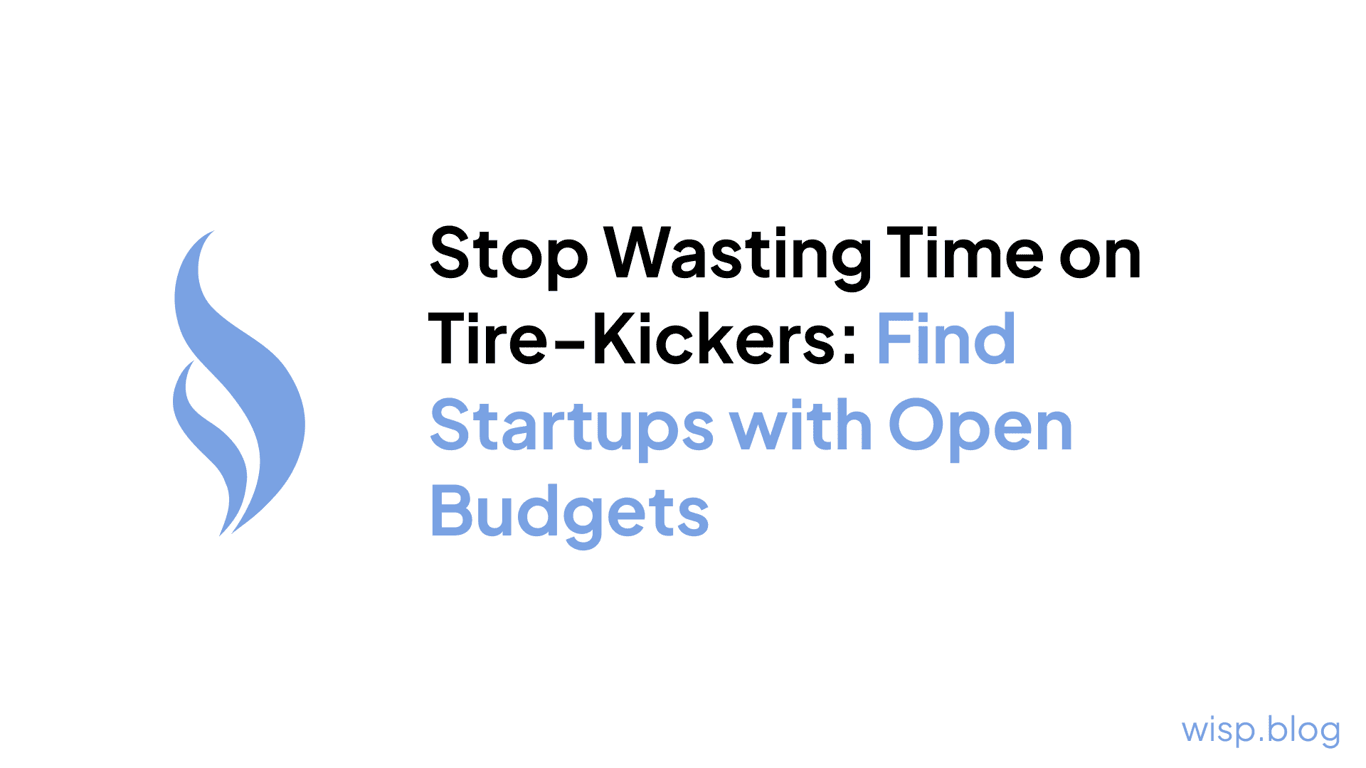 You've set up your B2C startup, developed your MVP, and you're ready to raise that crucial pre-seed round. There's just one problem—you absolutely dread the thought of spending hours crafting the perfect LinkedIn profile and sending connection requests that disappear into the void. The good news? You're not alone, and more importantly, you don't need LinkedIn to successfully network for fundraising.
You've set up your B2C startup, developed your MVP, and you're ready to raise that crucial pre-seed round. There's just one problem—you absolutely dread the thought of spending hours crafting the perfect LinkedIn profile and sending connection requests that disappear into the void. The good news? You're not alone, and more importantly, you don't need LinkedIn to successfully network for fundraising.
"I have never heard anyone say LinkedIn helped them do anything. No reputable investor uses LinkedIn for anything," shares one founder in a Y Combinator community discussion. For many entrepreneurs, LinkedIn has become a high-pressure environment that generates more anxiety than actual connections.
With over 900 million members and 70.8 million spam messages removed last year alone according to GrowthMentor, it's increasingly difficult to cut through the noise and make meaningful connections on the platform. But stepping away from LinkedIn doesn't mean abandoning networking altogether—quite the opposite.
The Power of Personal Networking
The most effective fundraising often begins right where you are, with people you already know. As counterintuitive as it might seem in our digital age, your immediate network likely holds more fundraising potential than thousands of LinkedIn connections.
"Start with your immediate network and go deep instead of wide," advises a successful founder who raised their seed round without a significant LinkedIn presence. This approach focuses on quality over quantity, building on established trust rather than cold outreach.
Here's how to leverage your personal network effectively:
Map your existing connections: Create a comprehensive list of everyone in your network—friends, family, former colleagues, mentors, and even casual acquaintances from industry events.
Identify potential investors or connectors: Not everyone will invest, but many can connect you to those who might. Note individuals with ties to angel investors, VCs, or other founders who have successfully raised funding.
Craft personalized outreach: Forget generic templates. When reaching out to your network, reference shared experiences and explain why you thought of them specifically.
Request warm introductions: Once you've identified potential investors beyond your immediate circle, ask your connections for introductions. A warm intro from a trusted source dramatically increases your chances of securing a meeting.
One founder shares, "I raised my entire pre-seed round through connections from my previous job. Not a single investor came through LinkedIn—they all came through warm intros from people who knew and trusted me."
Embracing Startup Events and Communities
Beyond your personal connections lies a world of in-person networking opportunities that can yield significant fundraising results. These venues offer something LinkedIn cannot—genuine human connection and the chance to demonstrate your passion and credibility face-to-face.
Startup Events Worth Your Time
Rather than scrolling through endless LinkedIn feeds, consider attending these high-value events where investors actively look for promising ventures:
Pitch competitions: These structured events give you a platform to present your business to potential investors while honing your pitch. The competitive element often attracts serious investors looking for promising opportunities.
Industry conferences: Major events like Slush in Helsinki (November 19-20, 2025), TechBBQ in Copenhagen (August 27-28, 2025), and CES in Las Vegas (January 7-10, 2025) bring together founders, investors, and industry experts.
Local startup meetups: Smaller, more intimate gatherings often provide better networking opportunities than large conferences. Check platforms like Meetup or Eventbrite for regular startup events in your area.
"The startup events I am aware of in SF have been centered around AI," notes one founder looking for diverse networking opportunities. If you're facing similar challenges finding relevant events, consider organizing your own small gathering of founders in your specific niche.
Co-working Spaces as Networking Hubs
"I will be working a bit from various co-working spaces - are there any hotspots for people like me to hang out?" asks a founder seeking networking opportunities. Co-working spaces have evolved into powerful networking hubs where serendipitous connections happen naturally.
Many successful fundraising stories begin with a casual conversation over coffee at a co-working space. These environments are designed to foster collaboration and community, making them ideal for organic networking.
Some strategies for maximizing co-working opportunities:
Choose spaces known for housing startups: Research which co-working spaces in your area attract founders and investors in your industry.
Participate in hosted events: Many co-working spaces organize pitch nights, founder meetups, or expert talks that attract potential investors.
Be visible and approachable: Rather than hiding behind headphones, position yourself in common areas where conversations naturally occur.
One founder shares, "I met my angel investor while making coffee at our co-working space. What started as small talk about my startup turned into a follow-up meeting and eventually a $150,000 investment."
Alternative Digital Platforms for Fundraising Networking
While LinkedIn might not be your platform of choice, several digital alternatives offer more targeted networking opportunities with less spam and greater focus on the startup ecosystem:
Investor-Focused Platforms
AngelList: This platform connects startups directly with angel investors and venture capital firms. With a focus on early-stage startups, it's particularly valuable for pre-seed and seed rounds. Create a compelling profile that showcases your traction, team credentials, and unique value proposition.
Stonks and SeedScout: These newer platforms help founders connect with investors through demo days and curated introductions, often with greater success rates than cold outreach on LinkedIn.
ProductHunt: Beyond product launches, ProductHunt has evolved into a community where founders can gain visibility with potential investors and build credibility through public feedback.
Community-Driven Networks
"It is so hard for us to find mentors and other like-minded co-founders," laments one founder. Specialized online communities can help fill this gap:
Slack and Discord Communities: Join founder-focused channels like On Deck Founders or explore niche communities related to your industry. These spaces often have dedicated investor channels or funding opportunities sections.
Startup Grind: This global community offers both virtual and in-person events, connecting founders with investors and mentors through structured programming.
StartupNation: Provides resources, forums, and connections specifically designed for entrepreneurs at various stages of growth.
Cold Outreach That Actually Works
While warm introductions are preferable, strategic cold outreach can still be effective without relying on LinkedIn. The key difference is in the approach:
Research thoroughly: Identify investors with a clear interest in your sector and stage. Look for those who have recently backed similar companies or expressed interest in your problem space.
Personalize heavily: Reference their previous investments, blog posts, or conference talks to demonstrate you've done your homework.
Be concise yet compelling: Clearly articulate your traction, unique value proposition, and why you're reaching out to them specifically.
Focus on email visibility: Use attention-grabbing subject lines that highlight traction or unique aspects of your startup. For example: "B2C fitness app with 20K users seeking pre-seed (referred by [mutual connection])"
One founder shares, "I sent 50 highly personalized cold emails to targeted investors and got 15 responses and 8 meetings. My success rate was much higher than when I used LinkedIn InMail, which got lost in the noise."
Conclusion
While LinkedIn dominates much of the professional networking conversation, it's clear that successful fundraising doesn't require a power profile or countless connections. Instead, focus on building genuine relationships through personal networks, targeted events, and alternative platforms.
The most successful fundraising strategies emphasize quality connections over quantity, authenticity over self-promotion, and strategic targeting over mass outreach. By leveraging these approaches, you can effectively build your fundraising network without the stress and noise of LinkedIn.
Remember, investors ultimately bet on founders more than products. By demonstrating your passion, credibility, and traction through genuine connections, you'll build a fundraising network that delivers not just capital, but valuable partnerships for the long-term growth of your startup.


